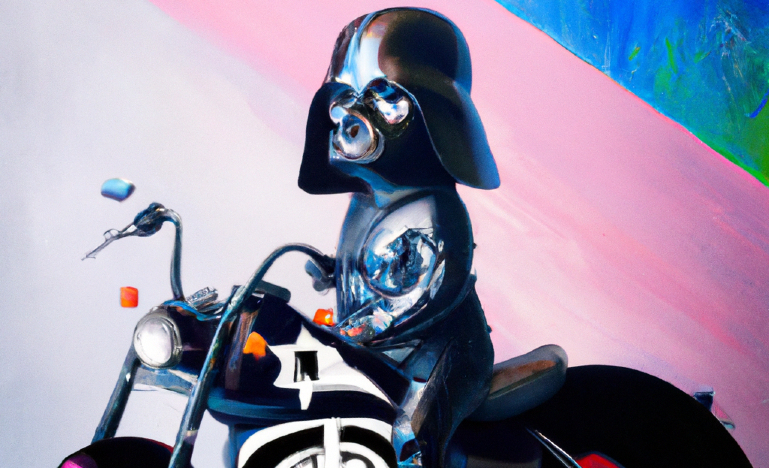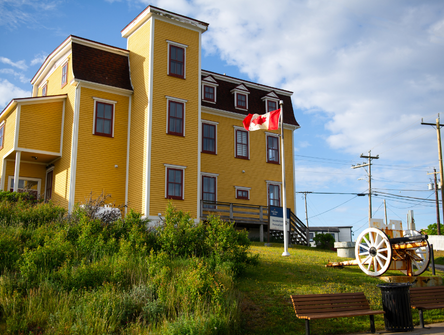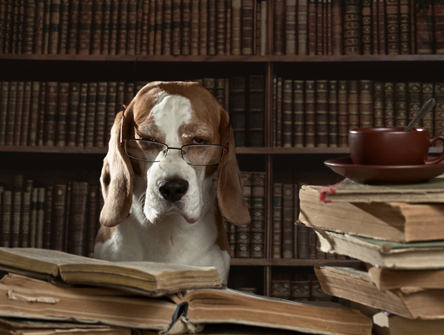The legal status of generative AI
Artificial intelligence can create art (good and bad). But what does it mean for copyright?

Andy Warhol might have appreciated the irony. The late artist who put the act of reproduction — of copying — at the centre of his oeuvre is now the focus of a copyright case before the U.S. Supreme Court.
The case involves a set of silkscreens Warhol made of pop star Prince based on a portrait taken by a professional photographer who is now suing Warhol's estate for copyright infringement. At issue is whether what Warhol brought to the image — the flat, masklike face, the day-glo colours — was "transformative" enough in legal terms to qualify as "fair use" under the U.S. Copyright Act.
Courts deal with such hazy questions of authorship and artistic style all the time — questions that might come more naturally to curators and critics. But now those questions are getting a lot hazier, because artificial intelligence is getting into the game.
"Generative AI" refers to semi-autonomous machine learning algorithms that allow computers to use existing content — text, images, video and audio — to create new works. A text-to-image AI turns user prompts into images; the user types in words describing what they want to see ("Baby Darth Vader on a Harley," for example) and the AI "creates" the image (we tried, it works).
How? Generative AI algorithms are built upon vast amounts of content scraped from the internet. In the case of Stable Diffusion, one of the most popular text-to-AI systems, the algorithm was "trained" on billions of images pulled from hundreds of domains — blogs, stock art libraries, art sites, everything. Some of that scraped material is not copyrighted anywhere. Much of it is.
It's new technology and it's posing some puzzling new questions for people in the copyright field. Who owns the images made by generative AI? Who owns the inputs? Can artists claim some stake in an image created by an AI trained on their work? Does an artist whose style is being ripped off by a machine have any recourse?
Right now, there's no legal consensus on any of these questions, either in Canada or in the major jurisdictions for AI startups (the U.S., U.K., EU). The companies behind generative AI can make their own assertions — OpenAI, the firm behind the wildly popular DALL-E platform, claims it retains ownership of the "original" images, although its subscribers get full rights to reprint, sell and merchandise them. But that claim has yet to be tested in court.
Canadian copyright law takes its cue from a 2004 decision of the Supreme Court: CCH Canada Ltd. v. Law Society of Upper Canada. In it, the high court defined an "original work" in terms of effort — as a product of "an exercise of skill and judgment." That exercise of skill and judgment, wrote then Chief Justice Beverley McLachlin, "must not be so trivial that it could be characterized as a purely mechanical exercise."
It's hard to imagine a creative act more mechanical than feeding an AI a few prompts. Tom Lebrun, a Quebec-based lawyer who specializes in digital law and copyright, said that "for most AI-generated images, the copyright would belong to no one.
"No one would own the image because no one would have contributed the talent or judgment required to produce an original work," he said. "So it would be public."
But what happens when the user actually puts in some effort? What if the user expends considerable time and effort refining the prompts? What if an advertising firm uses AI-generated imagery in a campaign — could they find their work appropriated by others legally?
"The maker of the camera is not the creator of the photos. That's not up for debate," said Alan Macek, a partner and patent agent at DLA Piper. "I think advertising campaigns will be careful to make sure there's enough human authorship to forestall any arguments about copyright. But as the user's role becomes less and less, the questions get trickier.
"The thing is, we don't know. What if the user spends all morning refining the keywords and prompts to produce the image they want? On the other hand, if I hand the words over to my friend the painter to paint a painting, I don't think anyone would regard me as the creator."
So much for output. What about input? Could an artist prove that their work formed part of an AI's training dataset and, as a result, was exploited by that algorithm to produce work in the artist's style? Would it matter?
Both Canadian and American copyright law make exceptions that allow third parties to make use of copyrighted material. The "fair use" doctrine in U.S. law is blurrier than the "fair dealing" doctrine in Canadian law, which limits third-party use to a handful of purposes: education, satire, parody, research, private study, criticism and journalism. Canadian law is more protective of an individual artist's expression.
"Style is protected under Canadian copyright law," said Lebrun. "Judges try to view the artwork as a whole. They're looking to determine whether there is enough of the original work in the work in question to justify protection. Sometimes it's a key feature of the composition. Sometimes it's the style itself.
"But the artist may have to find something better than style to prove the case. What would really help would be proof that the artist's work was part of the original dataset used to train the AI. That would definitely help."
Best of luck getting that proof, said Eve Gaumond, a Quebec-based researcher in information technology law. She said AI companies would be extremely reluctant to open their datasets to scrutiny, even if they managed to retain them.
"The company would argue the dataset is proprietary information," she said. "And in any case, you'd be talking about millions and millions of images. Tech companies tend to move fast and break things, so they don't necessarily preserve all aspects of their development processes."
Tech companies also tend to have deep pockets. Artists seldom do. Gaumond predicts stock image companies will be the "first out of the gate" with lawsuits alleging copyright violation through generative AI.
"They're the ones whose images are being ripped off and they've got the resources to take a case all the way," she said.
But because Canada is a little fish in a big copyright pond, said Lebrun, many decisions about the legal status of generative AI may be settled abroad. "The principal problem facing any artist in this situation is jurisdiction," he said. "This isn't happening in Quebec. It's happening in California, mostly. This is an international issue. It's international data."
So keep an eye on that Warhol case in the U.S. Even though it doesn't deal directly with generative AI, it's a rare instance of the U.S. Supreme Court touching on the law of fair use. Given the United States' vast cultural footprint, any significant changes to the court's interpretation could have ripple effects worldwide.
But until it does, and until Canadian courts start generating case law of their own, the legal status of AI art remains a blank canvas.


